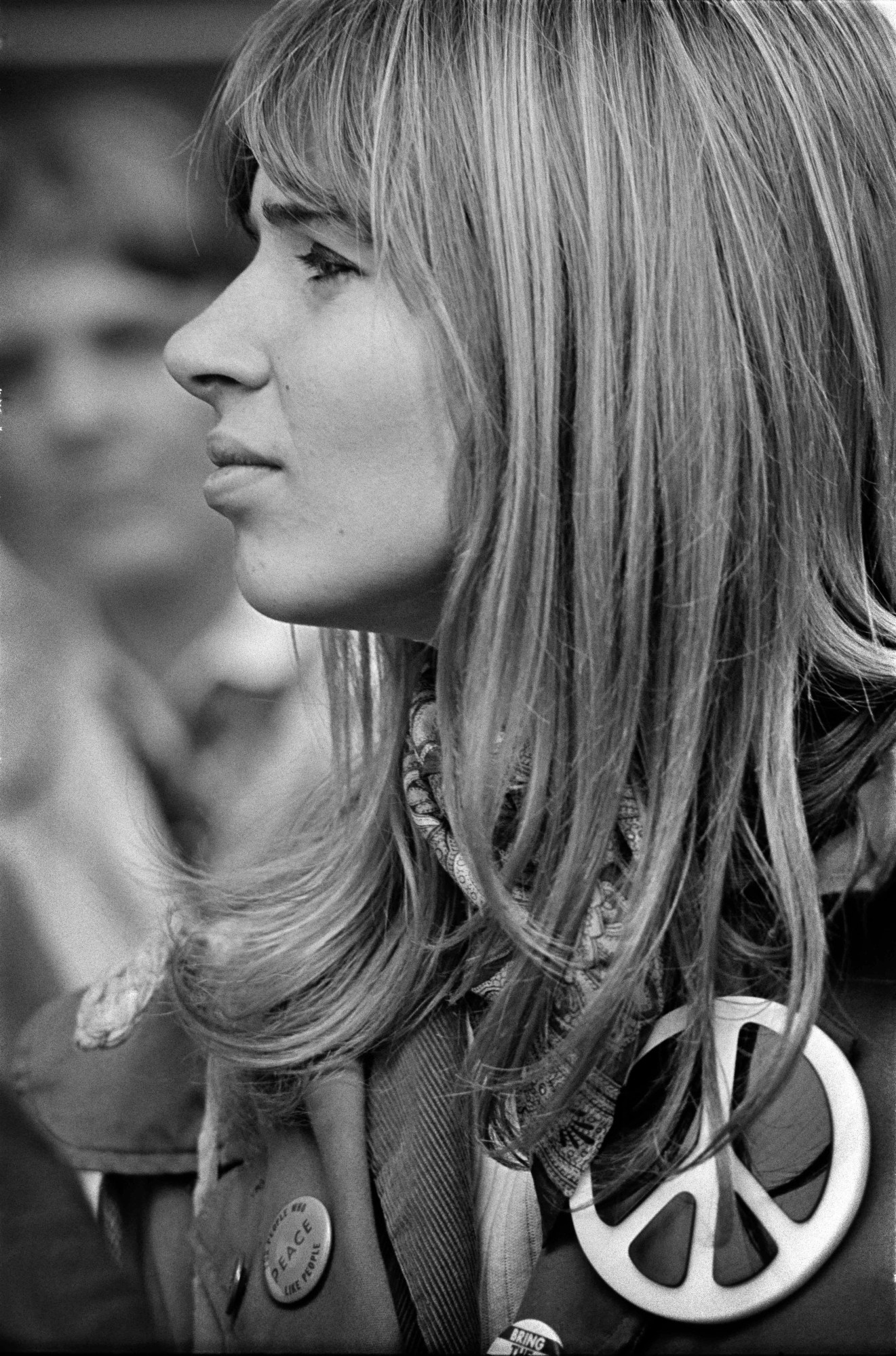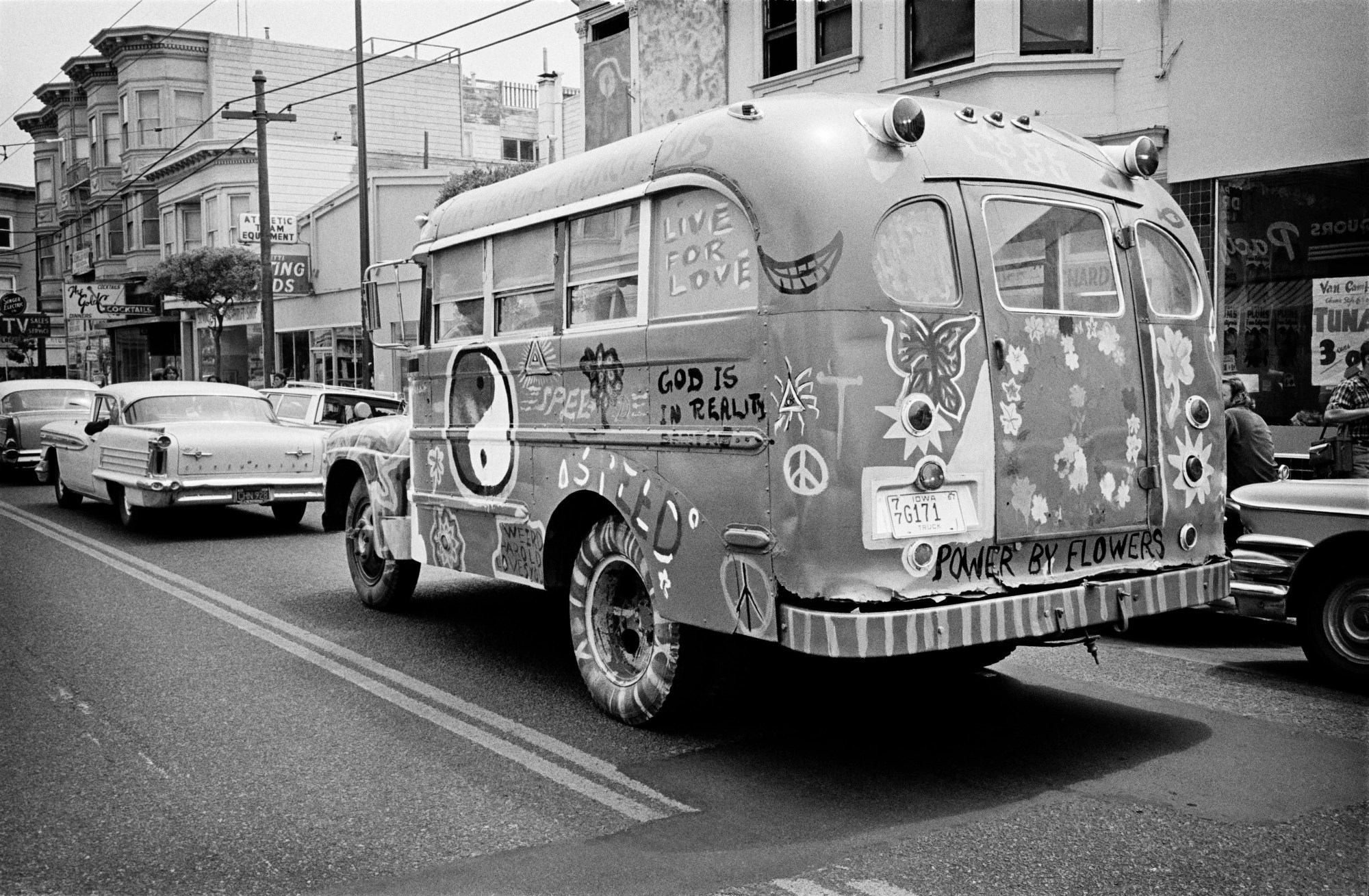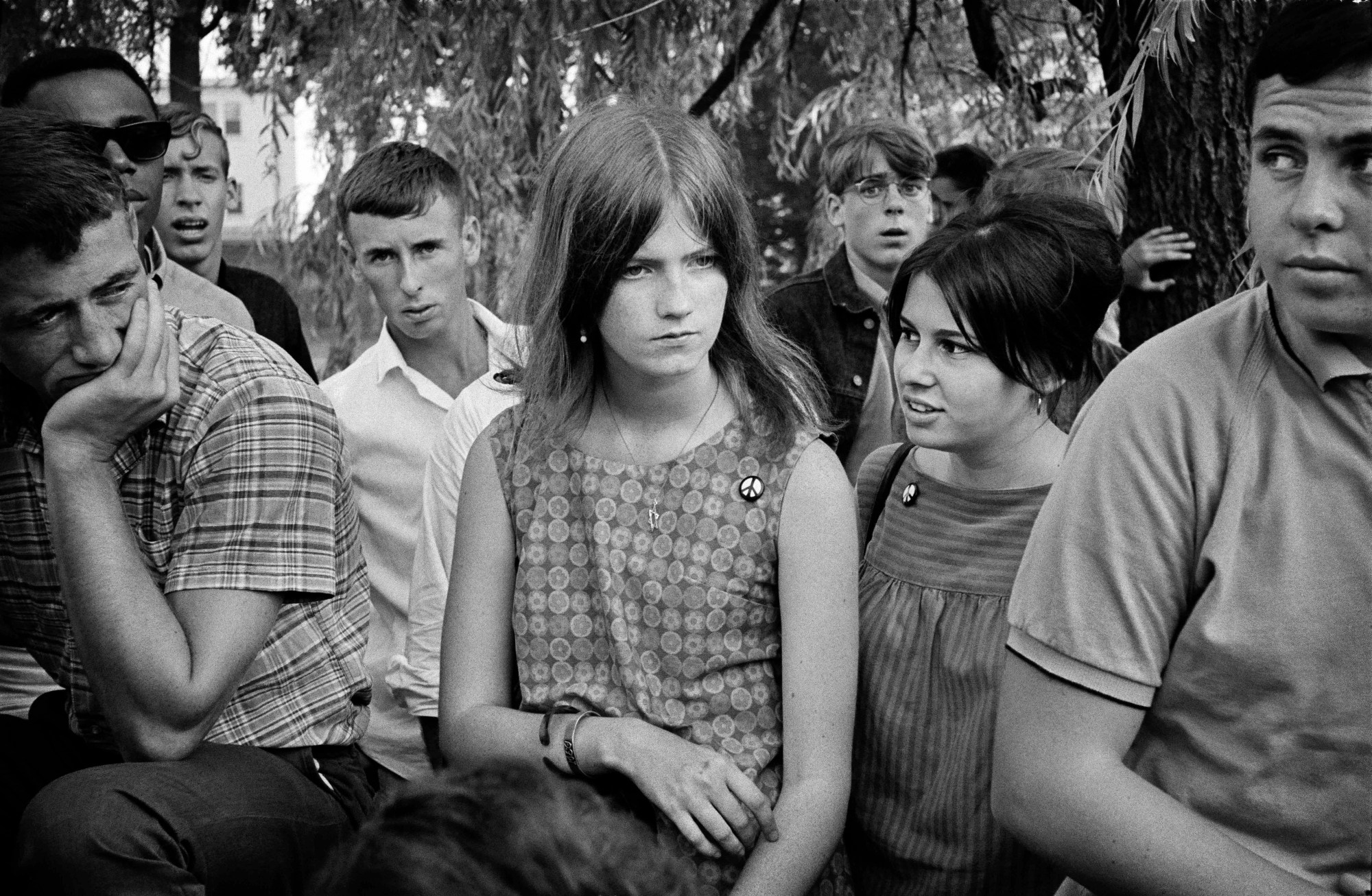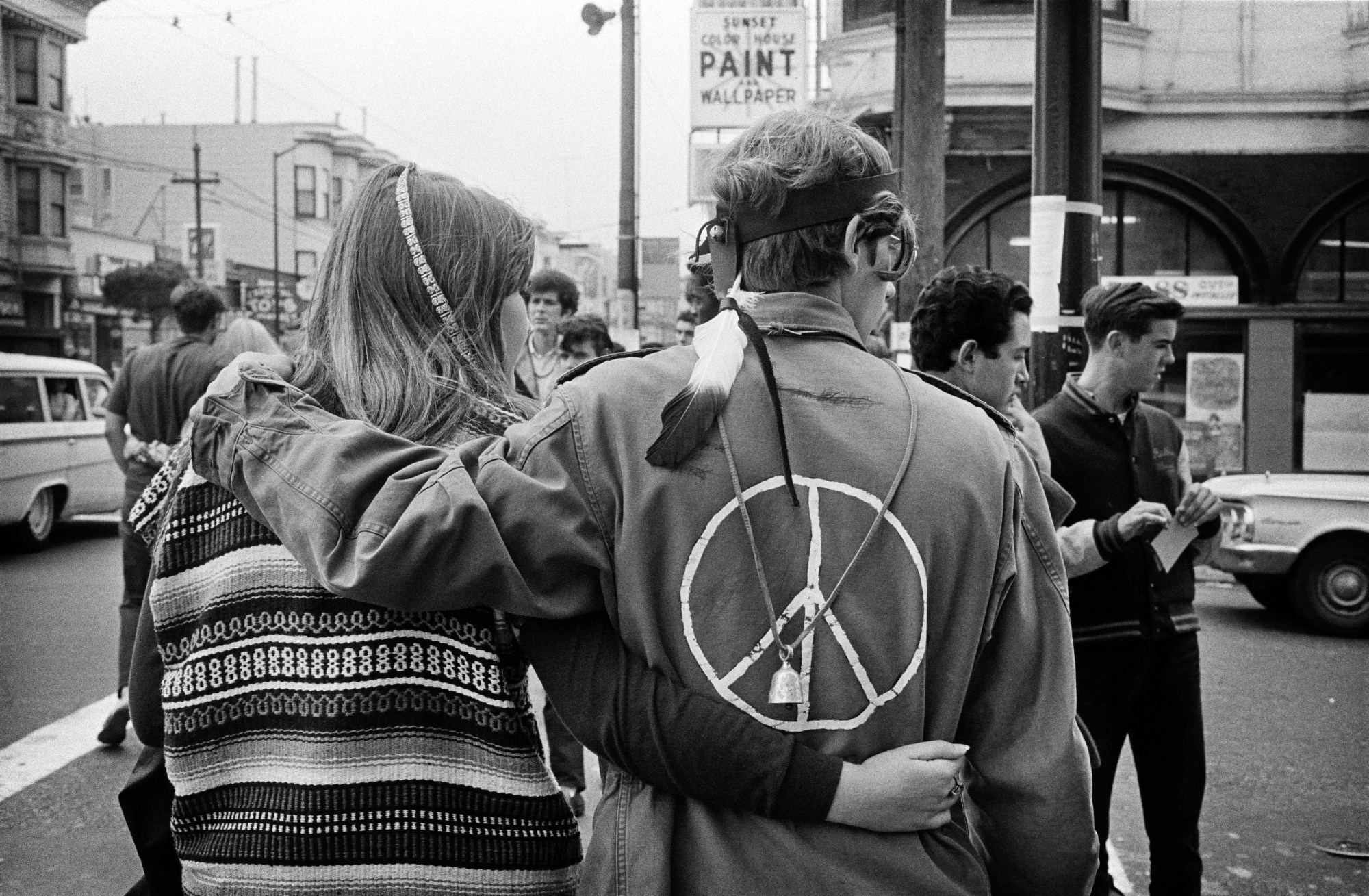The peace sign became such a powerful symbol of anti-war sentiment in 60s America that in 1968 a faction of far-right evangelists tried to prove it was a satanic mark.
In fact, the sign was invented by Gerald Holtom, a Christian pacifist and member of a British anti-nuclear group named the Direct Action Committee, in 1958. Asked by his organization to create a universal symbol of anti-nuclear protest, Holtom turned to the international language of flag semaphore, combining the signals for “N” and “D” (for nuclear disarmament) inside a circle. Within months, the sign spread to the U.S. and its meaning expanded to include pacifist movements beyond “Ban the Bomb” protests. It became a talisman for the hippie generation.

Photographer Jim Marshall grew up in San Francisco taking portraits of jazz musicians in the city’s coffee shops. In the 60s, he moved to New York and became a professional documenter of the rock scene, working for Rolling Stone and Columbia Records. His images from era-defining festivals including the Monterey International Pop Festival and Woodstock helped turn artists like Jimi Hendrix, Janis Joplin, and Jim Morrison into icons. But he also photographed the artists’ audience: kids for whom music and politics were inseparable.

Many of those shiny happy people appear in the new book Peace (Reel Art Press), a collection of Marshall’s images of peace signs shot mainly between 1961 and 1968. He photographed kids with peace signs pinned to their jeans, woven into their hair, and hand-embroidered onto their jackets at protests and concerts. His portraits capture a young generation both repulsed and galvanized by the politics of its time: opposed to war, racism, police brutality, and censorship and committed wholeheartedly to peace. Holtom’s peace sign embodies that duality: it’s an emblem of love that will forever be associated with the threat of nuclear weapons and war.

While on assignment at festivals “Jim always had his eyes open, to see what else was happening around him,” photographer Amelia Davis, Marshall’s friend and contemporary, says in the introduction to Peace. He was a photojournalist as much as a rock star portraitist. “Among the things Jim hated, really hated, was being called a rock photographer,” Davis writes, “‘Ansel Adams was a rock photographer,’ he would shout, ‘I’m a photographer!'”

Shooting on a manual Leica (which Davis notes was extremely difficult to use), he focused on the peace sign as a pervasive symbol of all that was both wrong and right with his time. The book’s images were taken at police brutality protests in San Francisco, peace walks for nuclear disarmament, the 1967 “Human Be-In” in Golden Gate Park, and free speech rallies on college campuses.
Poignantly, many of Marshall’s images also evoke more recent history. A “NO ON THE TRAVEL BAN” sign captured at an Oakland anti-war protest in 1965 recalls banners carried at rallies across the country this past January. And in a week when Trump has threatened to “totally destroy” a nation that is currently testing nuclear missiles, Marshall’s images of peace-symbol-adorned “Ban the Bomb” signs feel especially urgent again.
‘Peace: Photographs by Jim Marshall’ is out now through Reel Art Press.
